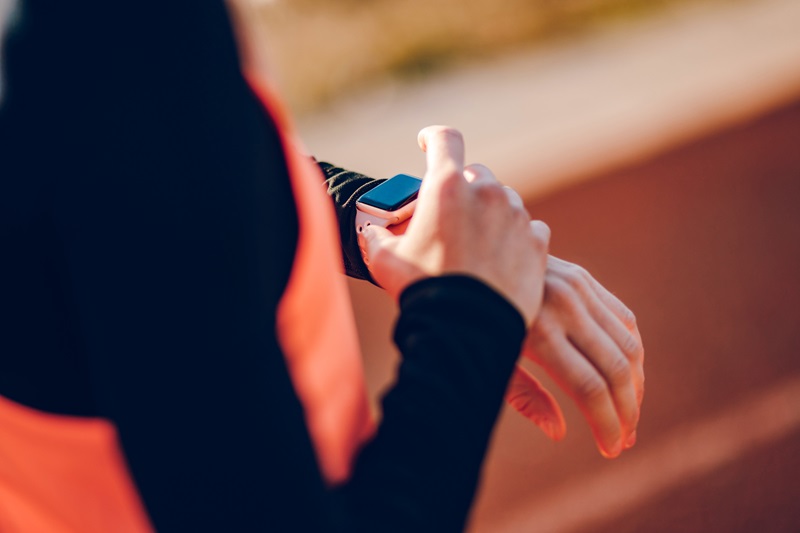How many calories are you really burning when you exercise? Smartwatches, apps, treadmills and all kinds of other devices estimate the energy you’re expending when you get sweaty, but those numbers can vary wildly.
The calories burned that these gadgets display can also be way off. In 2022, scientists reviewed 65 different studies on wrist wearables. They found that, on average, the calories burned that are displayed on these devices are off by 30 percent or more.
For runners, though, there’s an old adage that makes it seem simpler. They believe that when you run a mile, you burn around 100 calories—no matter how fast you go. So, this old wisdom says, if you jog a 16-minute mile or hum along at double that pace, you’ll peel off 100 calories for every 5,280 feet you trod.
Part of that wisdom is true, and part of it depends on you. Read on to find out how many calories do you burn running a mile? Plus, learn why running and walking burn slightly different amounts, and a simple way to use your wrist wearable or other device to learn how many calories you really burn during any workout.
No Matter the Speed You Run, You’ll Burn Roughly the Same Calories

While the “100 calories” part of the accepted running wisdom isn’t quite right, the other half is mostly true. For most runs, especially if you’re jogging or running at a relatively easy pace, you’ll burn a similar number of calories over the same distance, regardless of your pace. So, whether you run a 12-minute mile or a 10-minute mile, you’ll burn around the same amount.
This has been proven in studies for decades. In one landmark study, scientists found that runners on a treadmill burned 0.97 calories per kilogram of bodyweight for every kilometer they ran. Translated into pounds and miles, that’s 0.71 calories per pound of bodyweight per mile.
So, to estimate how many calories you burn running a mile, multiply your body weight in pounds by 0.71. For a 200-pound person, that’s 142 calories burned.
The Exception to This Rule: When You’re Running Hard

The studies on this topic, including the one listed above, measured how many calories are burned based on how much oxygen the runners expend. This means that what was measured was how many calories were burned aerobically—a word that, in addition to dance exercise, refers to how much fuel the body uses when there’s oxygen present.
When you’re walking, almost all the calories you burn are aerobic. That’s why you don’t tire out. But when your heart rate climbs, your muscles can’t get all the oxygen they need to fuel the contractions they’re doing to keep you going. At this point, exercise becomes anaerobic, meaning it’s fueled without oxygen. In these cases, your body uses carbohydrate stores in your muscles to fuel your work.
Anaerobic exercise is hard exercise: It’s the kind that makes you “feel the burn,” and eventually makes you run out of gas. It also burns calories differently.
In a study that measured the calorie burn of competitive runners going 3000 meters, scientists found that 14 percent of the calories they burned were anaerobic, tacking some extra calorie burn onto the aerobic-only calculation above.
If you run or jog at an easy pace, most of your burn will be aerobic. But if you kick it into high gear, you’ll burn a little more.
Does Running Burn More Calories Than Walking?

While running at the same pace over a distance burns the same calories, no matter your running pace, walking does burn slightly fewer calories. In a study that looked at males and females, walking 1600 meters (about one mile) burned an average of 88.9 calories, while running the same distance burned an average of 112.5 calories.
One reason for the difference between running and walking: Bounce. When you walk, your pelvis and center of gravity stay at relatively the same height off the ground. But when you run, your feet sort of “jump” off the ground, bouncing your torso up and down. Moving the weight of your torso takes energy.
That doesn’t mean walking isn’t a great way to burn bonus calories, though. Just the opposite! Because there’s less impact, you may be able to walk more, and more often, than you can run. The authors of the study above also point out an important point in walking’s favor: “Everyone does not like to run.”
How to Calculate Calories Burned

Your wrist-worn fitness tracker can give you some valuable information for calculating your calorie burn: How long you worked out and your average heart rate.
For decades, scientists have been tweaking calorie burning equations that can tell you—within reason—how many calories you’ll burn based on your age, weight, heart rate, gender and length of exercise.
In a study, scientists created the following equations to estimate calories burned during any workout. In the equation, “HR” represents average heart rate during the workout. “W” is weight in pounds. “A” is age. And “T” is the amount of time spent exercising.
Equation for Calories Burned: Men
Calorie Burned = ((-55.0969 + (0.6309 × HR) + (0.1988 × (W x 0.45)) + (0.2017 × A)) / 4.184) × 60 × T
Equation for Calories Burned: Women
Calorie Burned = ((-20.4022 + (0.4472 × HR) + (0.1263 × (W x 0.45)) + (0.074 × A)) / 4.184) × 60 × T
Too much math? Click this link to plug in your numbers and learn your calories burned using the same calculation.
The post How Many Calories Do You Really Burn Running a Mile? appeared first on The Leaf.
from The Leaf https://ift.tt/3jgM0bC
source https://weightlossofrecipes.blogspot.com/2024/01/how-many-calories-do-you-really-burn.html



0 Comments